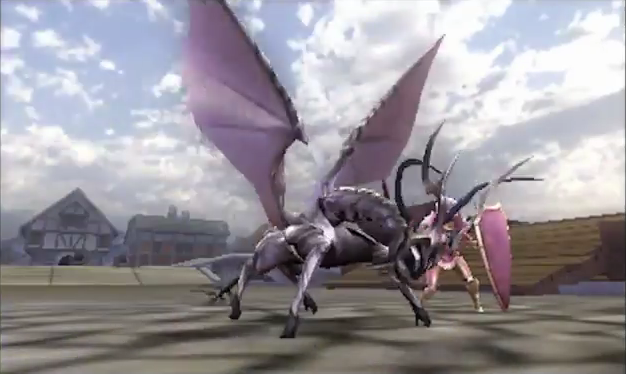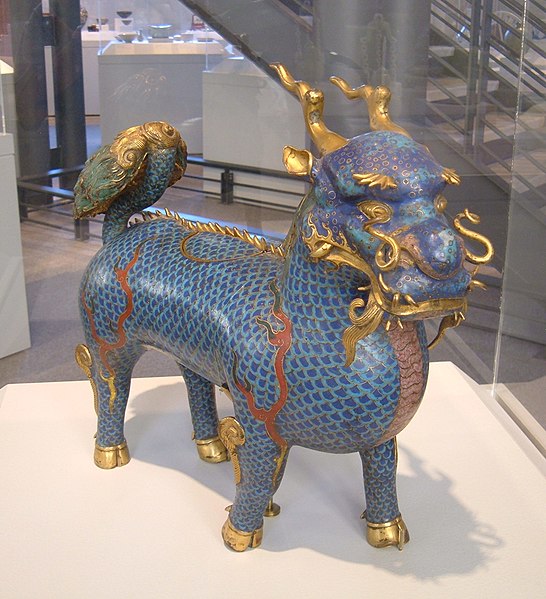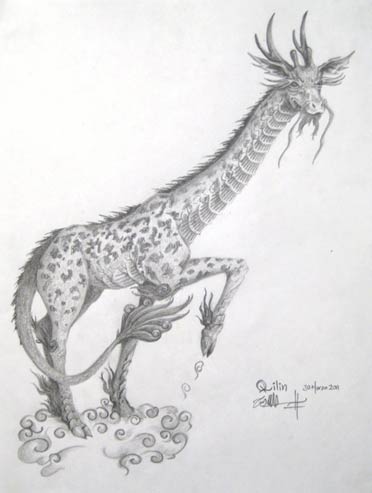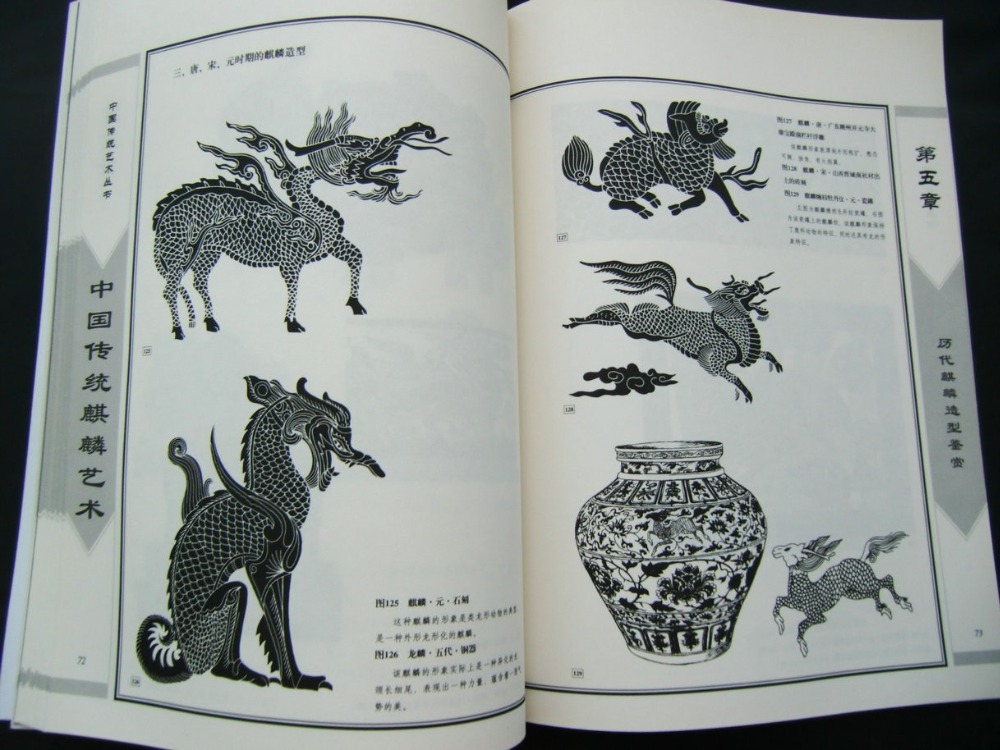I'm seeing way more stag than dragon in that though
Looking at some historical references, here's what I found:
Original:
Chinese Dragon seems to be a more concrete inspiration for Kamui's design,
not Japanese ones. Let me quote Wikipedia on this one.
Ancient Chinese self-identify as 'the descendants of the dragon' because the Chinese dragon is an imagined reptile that is the evolution ancestor of humans and other common animals.
[11] From its origins as totems or the stylized depiction of natural creatures, the Chinese dragon evolved to become a mythical animal. The
Han Dynasty scholar
Wang Fu recorded Chinese myths that
long dragons had nine anatomical resemblances.
The people paint the dragon's shape with a
horse's head and
a snake's tail. Further, there are expressions as 'three joints' and 'nine resemblances' (of the dragon), to wit: from
head to
shoulder, from shoulder to breast, from
breast to
tail. These are the joints; as to the nine resemblances, they are the following:
his antlers resemble those of a stag, his head that of a
camel,
his eyes those of a demon,
his neck that of a snake, his belly that of a
clam (
shen, 蜃), his scales those of a
carp, his
claws those of an
eagle, his soles those of a
tiger, his ears those of a
cow. Upon his head he has a thing like a broad eminence (a big lump), called [
chimu] (尺木). If a dragon has no [
chimu], he cannot ascend to the sky.
[12]
Further sources give variant lists of the nine animal resemblances. Sinologist Henri Doré lists these characteristics of an authentic dragon: "
The antlers of a deer. The head of a crocodile.
A demon's eyes.
The neck of a snake. A
tortoise's
viscera. A
hawk's claws. The palms of a tiger. A cow's ears. And it hears through its horns, its ears being deprived of all power of hearing."
[13] He notes that, "Others state it has a
rabbit's eyes, a
frog's belly, a carp's scales."
The antlers are consistent throughout historical accounts, although Kamui is obviously an amalgamation of many types of dragons. The Chinese, however, are the only ones who have antlered dragons as a part of their description of dragons, so there must be a connection there. Here are some illustrations that look similar:
That said, I don't think he's based off of a "dragon" technically at all. I think he's based off of the Qilin(Kirin in Japan), a chimerical creature that, while not technically a dragon, has aspects of one.
Qilin generally have
Chinese dragon-like features. Most notably their heads, eyes with thick eyelashes, manes that always flow upward and beards. The bodies are fully or partially scaled, though often shaped like an ox, deer or horse's, and always with cloven hooves. In modern times, the depictions of qilin have often fused with the Western concept of unicorns.
I'm actually leaning heavily towards this, because of two things. One, the design of Kamui, which is already more similar to the Qilin historically, makes even more sense when cues are taken from giraffes, as the Chinese believed giraffes to actually be Qilin when they first encountered them.
The Japanese Kirin actually even drawn more deerlike, which is even more telling.
Combine that with the mythos behind the qilin:
- Although they can look fearsome, qilin only punish the wicked, thus there are several variations of court trials and judgements based on qilin divinely knowing whether a defendant was good or evil, and guilty or innocent, in ancient lore and stories.
- In Buddhist influenced depictions, they will refuse to walk upon grass for fear of harming a single blade, and thus are often depicted walking upon the clouds or the water. As they are divine and peaceful creature, their diets do not include flesh. They take great care when they walk to never tread on a living creature, and appear only in areas ruled by a wise and benevolent leader, which can include a household. They can become fierce if a pure person is threatened by a malicious one, spouting flames from their mouths and exercising other fearsome powers that vary from story to story.
- Some stories state that qilin are sacred pets (or familiars) of the deities. Therefore, in the hierarchy of dances performed by the Chinese (lion dance, dragon dance, etc.), they ranks highly; third only to the dragon and phoenix who are the highest. In the qilin dance, movements are characterized by fast, powerful strokes of the head. The Qilin Dance is often regarded as a hard dance to perform due to the weight of the head, the stances involved, and the emphasis on sudden bursts of energy (Chinese: t 法勁, s 法劲, p fǎjìn).
- In the Post-Qin Chinese hierarchy of mythological animals, the qilin is ranked as the third most powerful creature (after the dragon and phoenix), but in Japan, the kirin occupies the top spot.
So it punishes the wicked and delivers judgement, is divine and peaceful, protects the pure from the innocent, has a connection with dances, and is the most powerful creature in the hierarchy of Japan.
Coincidence?



















